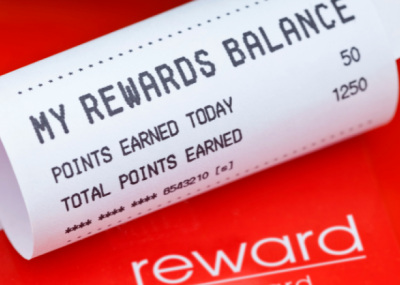Key Takeaways
According to Restaurant Report, a successful restaurant typically spends 28%-35% on food products. That’s the biggest expense for the restaurant, while labor costs, rent/utilities and other costs come after that. Restaurants who track their weekly inventory and good costs are 2-10% more profitable than those who don't.
To ensure you increase your profits and sustain a healthy growing restaurant business, you should first increase the level of effective restaurant inventory management and minimize the original costs of food.]

Restaurant inventory management is the process of ordering, storing, and using an inventory which includes raw materials, finished goods, and disposable supplies. The life cycle includes the following steps:
- Negotiating the best possible prices with suppliers,
- Ensuring orders are delivered on time,
- Making sure you have enough stock,
- Storing the ingredients properly,
- Finding ways to use overstock products.
Combining the power of automation with your restaurant inventory management system and the professionalism of your staff members, you can lower your food costs while maintaining the high quality and freshness of ingredients.
Here are 11 tips that will help you avoid food wastage, spoilage, excess inventory, and make the most of each ingredient that arrives in your stocks.
How to manage your restaurant inventory like a pro
Check your ingredients regularly
Some ingredients only last a few days, some others may last for a week or month. Consequently, you should track perishable and popular ingredients daily, while non-perishable and unpopular ingredients - weekly or twice a week.
Set fixed days and schedules for all inspections so your kitchen is never running out of the necessary ingredients.
Maximise freshness and minimise waste with FIFO
The FIFO method assumes that the ingredients with the nearest expiration date will be used first. Place your newly received ingredients behind the older ones so your older ingredients don’t reach their expiration date and spoil.
Track food wastage
You can track the food wastage by creating a list and writing down which ingredients got spoiled or were thrown away. You should also be specific with the ingredient amount/weight, date of wastage, and the reason.
The reasons may vary starting from the ingredient getting spoiled to the server registering a wrong order and ending with the chief preparing the wrong recipe.
Tracking the patterns will help you understand the main reasons, help train your staff accordingly, and reward them for reducing wastage over time.
When possible, buy in bulk
Buying in bulk makes sure you won’t run out to get supplies too often. Besides, it saves you money as suppliers usually offer discounts on large orders.
However, not all ingredients are suitable for bulk purchasing. You should choose items that have a long shelf life such as dried pasta, dried bean, teabags, etc. Disposable items such as napkins, toothpicks, etc never go bad, so it’s worth buying them in bulk as well.

Find ways to reuse the wasted ingredients
Once you have a reliable restaurant management system, you will get recommendations on what to order, when, and how much. The recommendations are based on consumption patterns and orders you have previously registered in the system.
However, sometimes you aren’t able to control everything. So you need to act quickly to deal with the surplus food and avoid throwing it away.
You can’t use spoiled ingredients, of course. But you can get creative and re-use the ingredients that are still fresh.
For example, you can create a special menu for that particular day, promote that recipe among your guests, and serve the ingredients while they are fresh. Or you can serve the surplus food as amuse-bouche - bite-sized dishes that are served before the main dishes. They are common in expensive restaurants and are designed to stimulate guests to order more food.
Make sure your ingredients are stored safely
Different ingredients need different ways of being stored. But the golden rule is to keep the ingredients out of direct sunlight and maintain the humidity level under 15%. A hygrometer will help you track the humidity level and make sure it remains consistent.
Use airtight containers to keep the bacteria, outside odors, and moisture out. Add labels to the containers and info about the ingredient’s use by date.
If possible, order meat in vacuum-pack packaging so it’s stored in a hygienic and safe way. Try to store it in a different shelf of the fridge so the juices don’t drip down into other ingredients.
Keep your fridge organized
The first rule of managing your fridge - don’t overfill it as it can block air vents and prevent the flow of cold air. Besides, you will have trouble finding the necessary ingredients in an overfilled fridge and end up ordering ingredients that you actually have at hand.
Add all your recipes to your restaurant management system and get recommendations
Restaurant management systems allow you to add recipes, their ingredients and amount/weight, and how much each recipe costs. Once the ingredient costs change or you substitute any ingredient in any recipe, the data should be reflected in the software.
Depending on how your guests consume your recipes and how popular this or that ingredient is, your system will recommend to you what to buy, when, and how much.
Diversify the usage of your ingredients
Are there ingredients that you use only in 1-2 recipes? If those recipes aren’t popular and profitable, you may end up buying food that will do more harm than good. Try diversifying the usage of your recipes to minimize spoilage and wastage. If an ingredient isn’t fully used in 1 recipe, you can easily add it to another one.
For example, if you use avocado to prepare Italian bruschetta, add other recipes as well that contain avocado. Examples may vary from an avocado toast to avocado salad and soup to sushi.
Inspect delivered food
Even the most reliable suppliers can sometimes make mistakes and forget a few ingredients or deliver food that is spoiled or very close to the use by date.
Your restaurant manager will probably be responsible for inspecting the delivered food, making sure there aren’t any missing ingredients and everything is fresh.In case the ingredients don’t meet your standards, send them back and pay only for high-quality products.

Train your staff on food storage best practices
Food storage and safety training should be compulsory for your food-handling staff as mistakes may result in food spoilage, poisoning, and ultimately hurt your reputation. There are food handling training certificate courses that teach about food storage and sanitation rules and your employees need to take them.
Train your staff on restaurant inventory management
Only a few employees should be responsible for taking inventory, ordering new food, and accounting for delivered orders. The number depends on how big your restaurant is. Also make sure that all your employees take inventory together at the same time and follow the same steps.
If many staff members are involved in the process and do it at different times, you will end up facing inconsistencies and seeing gaps in calculations
Final thoughts
Minimizing food costs and maximizing the ingredient usage are the best results an effective inventory management process can generate. Track your stock level and value, generate variance reports, manage waste with a professional software like EagleOwl, and you will get accurate data on what’s going on with your inventory and how to improve your operations.
Frequently Asked Questions


.gif)








